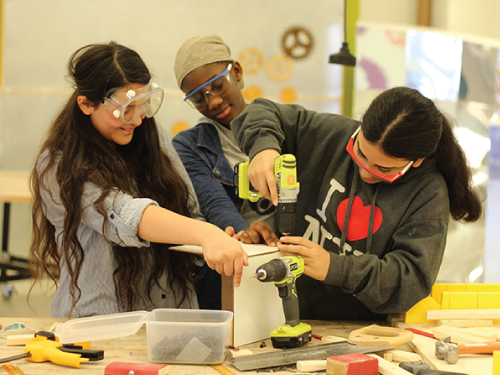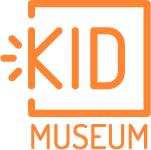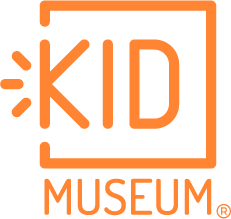
The headline “Why Design-Focused Schools Are The Future, Not a Fad,” by education consultant Tom Vander Ark, recently caught my eye because it so strongly supports KID Museum’s learning philosophy and ever-increasing role in the community.
Vander Ark, CEO of the learning design firm, Getting Smart, argues that “design thinking” isn’t a passing trend: it’s the future of education. Why? Because the challenges we face today—and will continue to face going forward—are global in scope and complex in nature. Design thinking trains students to think creatively and reinforces the problem-solving skills that will prepare them for our rapidly changing world.
In schools that take a design-focused approach, students learn to explore a problem from different angles and to approach it with empathy—to understand how it impacts individuals or groups differently. Students learn to generate multiple solutions, ask questions and critically evaluate each option. Finally, students learn to prototype, test, and refine their ideas, with the realization that failure is a natural part of the process.
Vander Ark identifies a number of trailblazing schools around the country that are grounded in a design-based learning philosophy. However, these schools are outliers. What can we do for the vast majority of students who are in schools that take a more traditional approach to learning? How can we help these students and schools integrate the invaluable learning that design thinking has to offer?
At KID Museum, we have created an impactful model for doing just that. We’ve established an innovative learning space unlike any other in the Washington, DC metro area, providing maker-based learning that incorporates STEM, arts and culture, with 21st century skills like creativity and critical thinking. Through local and regional collaboration, including a groundbreaking partnership with Montgomery County Public Schools (MCPS), we are bringing students essential design thinking learning opportunities.
Here are a few key practices for integrating design-based learning into everyday classrooms:
- Invention programs like our region-wide Invent the Future Challenge that allows students to collaborate with their peers through the design and invention process to address real world problems. Students come to KID Museum for a series of skill-building workshops and mentoring sessions that support Challenge work.
- Hands-on professional development courses for educators where they get the skills and inspiration needed to guide their students through design thinking projects. The skills we are promoting in our courses for local educators at KID Museum correspond to academic standards at all grade levels.
- Consultative support for schools like Making Spaces, a Google, MakerEd, and Children’s Museum of Pittsburgh initiative. As a hub for Making Spaces, KID Museum works with local schools to craft a vision for their design-focused, maker education, and then we help them launch crowdfunding campaigns for classroom makerspaces.
I agree with Vander Ark, who writes, “It’s time to make design thinking central to elementary and secondary learning.” But it’s not just our most forward-thinking schools—it’s also pioneering community partnerships—leading the way.

